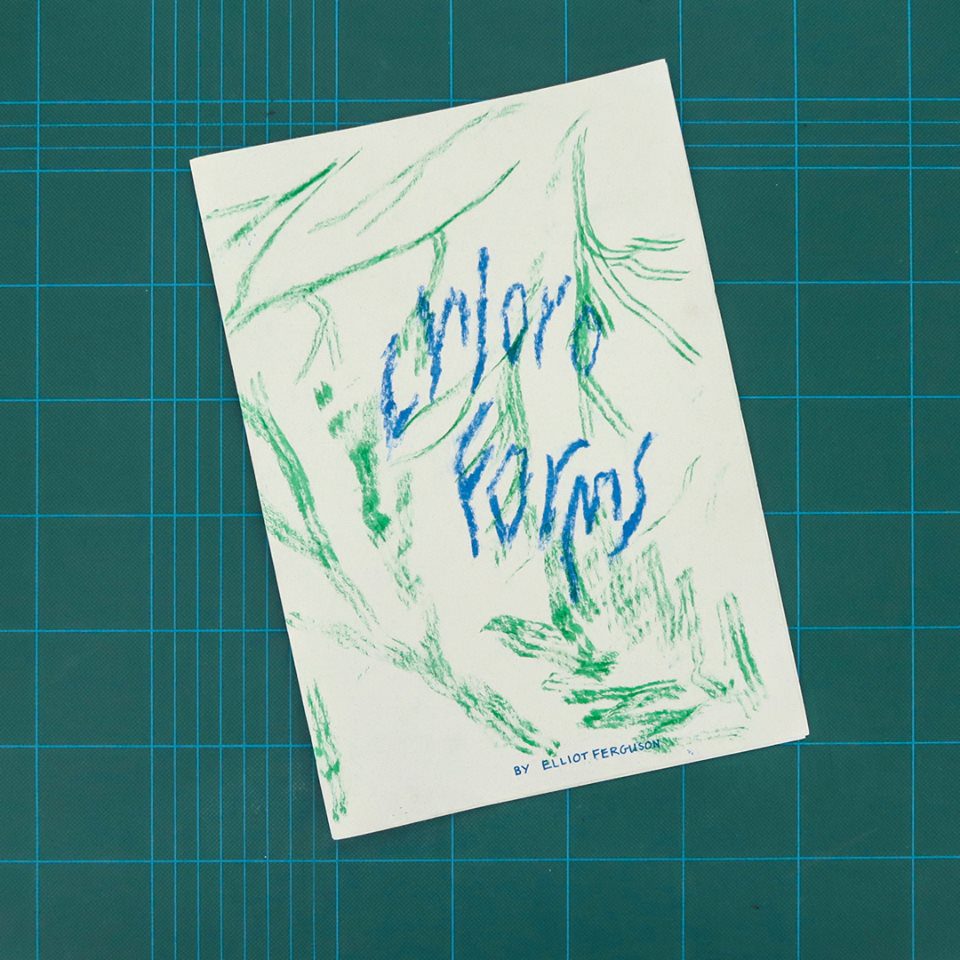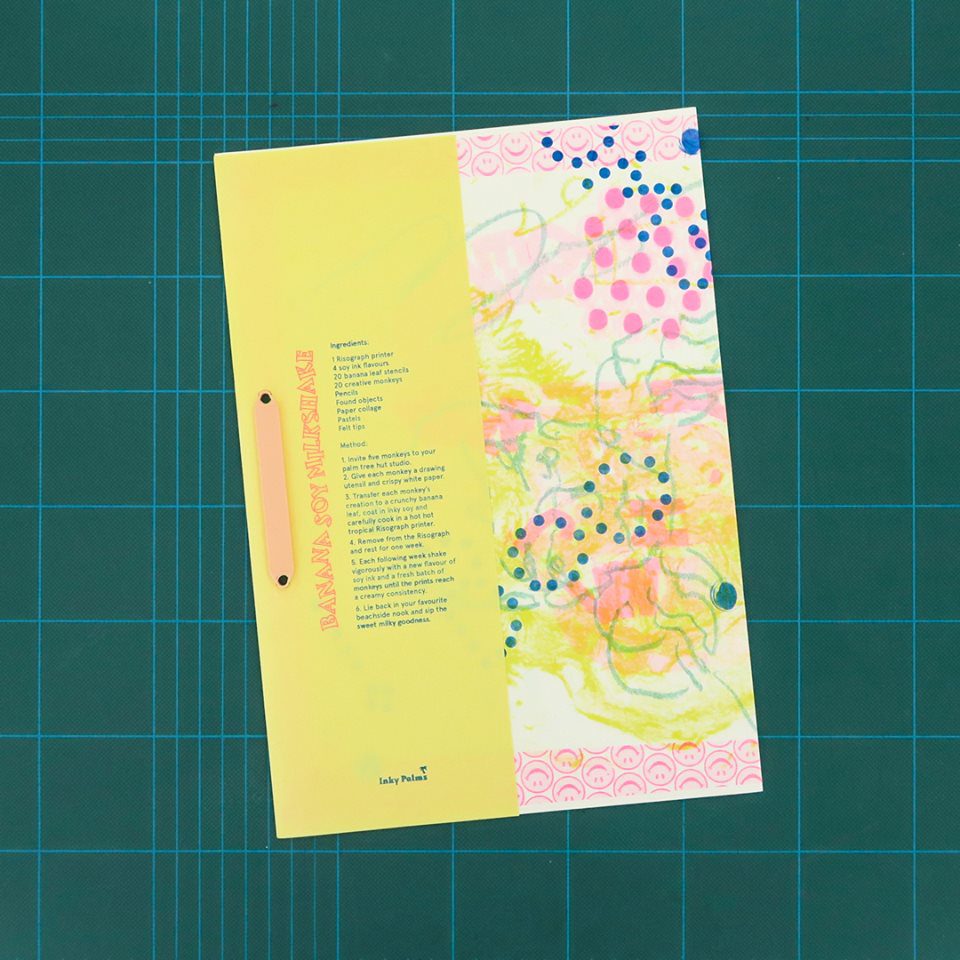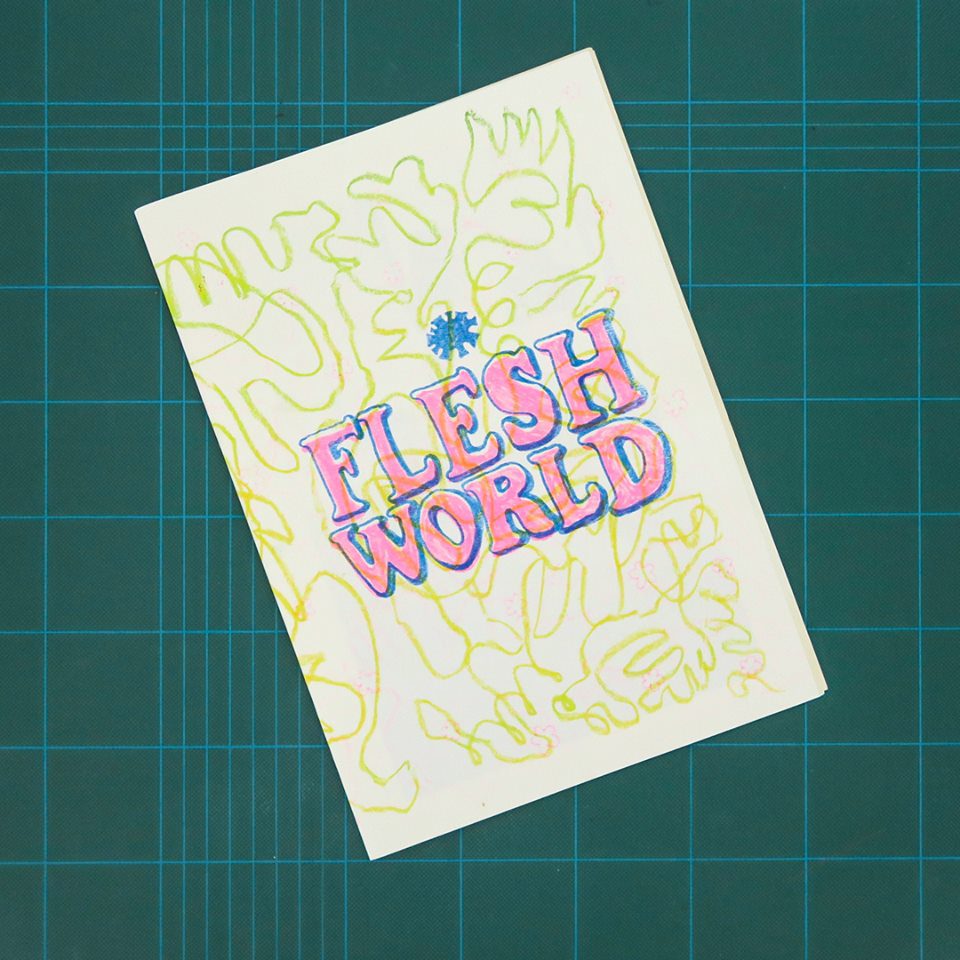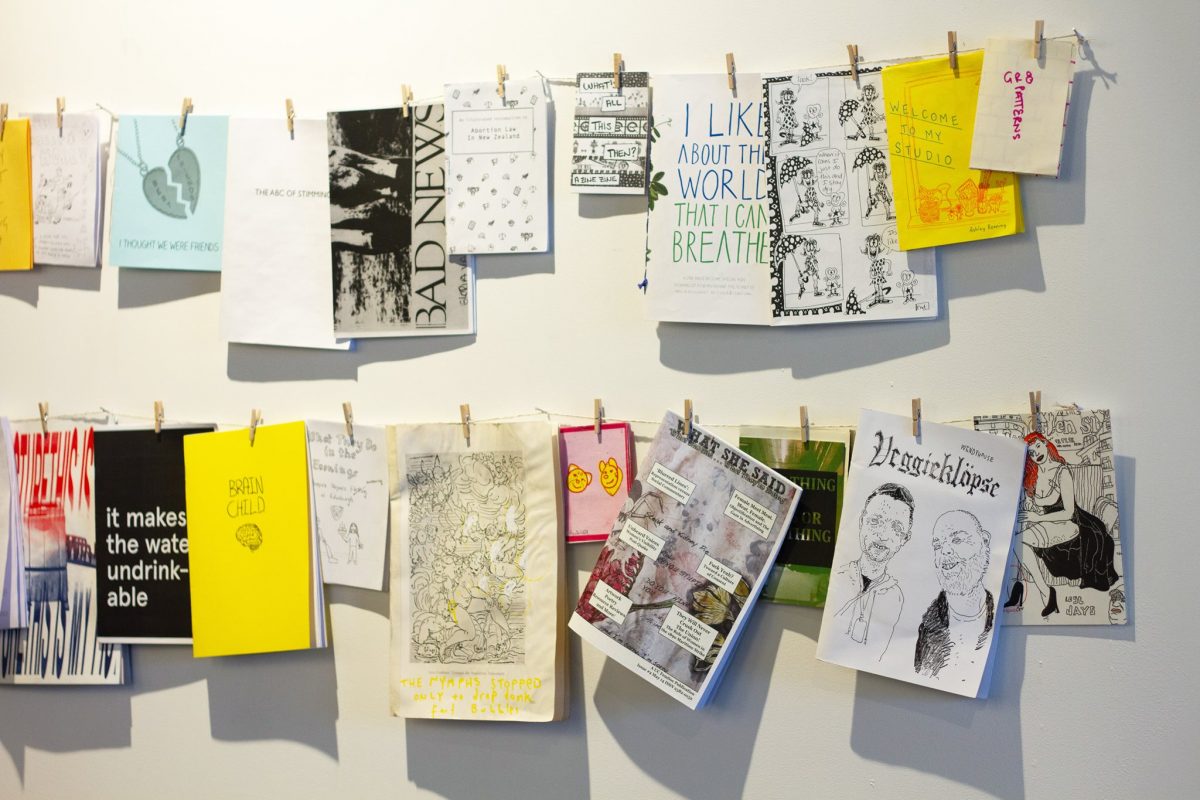I have always thought of zines in relation to urban art – subversive, rebellious intrusions into publishing, sent out into the world to disrupt more commercial networks of production. Yet, of course, there is so much more to zine culture. When I think back, I didn’t consider the potential in the homemade comics I drew as a child, possibly because I was mimicking the comics I couldn’t afford to buy. But the reality is that zines, much like my bootleg comics, are the realisation of the power in independent action, a signifier of the way we can create alternatives to the dominant cultures and productions and in small ways re-shape our world. With the 2018 incarnation of Christchurch Zinefest being staged over September, it provided an opportune moment to talk about zines and independent publishing with people who know a lot more than me: Zinefest organisers Alice Bush and Jane Maloney. Both Alice and Jane are zine makers, as well as champions of the forms and culture, understanding both the practicalities of producing as well as the significance of the objects conceptually. We sat down at the newly relocated Fiksate Gallery on Gloucester Street to talk about Christchurch Zinefest, the Christchurch/Ōtautahi Zine Library, the history of zines, the tactics of getting zines out in the world, and the impact of the digital age on zine making…
Fill me in a little bit about the history of Zinefest. Alice, have you been involved with Zinefest since its inception?
Alice Bush: No, I picked it up in 2015, I think. But Jane did it with me the first year… No, it was 2016 the first year that I did it, but I’d been going two years before that. I think it’s been running since like 2011…
Jane Maloney: I think it’s been running since my last year at University, so it would’ve been around 2011 or 2012.
Which seems really recent…
JM: Yeah, it is.
Being that zine culture, I assume, goes right back into any form of independent publishing. Was punk an important starting point for zines as we know them today?
AB: No, before that. Science fiction was sort of the first iteration of like fanzine culture, in the early 1930s. But even before that you see people printing independently published literature and that sort of thing, you know it can go right back to the start of printing. The first ‘zines’ were printed in the 1950s, or 1940s, when science fiction started to take off. It was mostly male-dominated as well, which is very interesting with where it has gone later on, with the Riot grrrl movement and stuff, and women reclaiming that sort of thing. But yeah, zines have been around a long time…
When did the specific term develop? Etymologically it’s a shortened version of ‘magazine’, right?
JM: I think it was when magazines were more popular, and the publishing of magazines was more mainstream, so the word kind of developed from that obviously. I feel like that was more when it was a punk kind of culture, because it was such a direct and important way to differentiate between mainstream publishing and underground publishing…
AB: Actually, I’d say no. I think it was zines, like fanzines, science fiction fanzines. At first, they weren’t calling them that. I did like a big research project on the history of zines and got really into what happened around that time, and I think it was like the early fifties that they started using the term…

But fanzine was developed from magazine to signify an independent approach?
JM: Yeah, I guess so. It’s still like more of a subculture obviously. It always was a subculture, but it was smaller, because it was just fanzines, that’s what zines were…
AB: But I mean, so were punk zines. They were just fanzines. But zines have just been a thing people pick up and use, that different subcultures pick up and use when they can.
JM: It’s a vehicle.
A tactic for disseminating ideas…
AB: Yeah.
As you say, any subculture can utilise it as a tactic, so the beauty is how the independence and flexibility can be adopted to any cause or idea…
JM: Yeah.
What was the stimulus for the Christchurch Zinefest? Christchurch has these interesting bubbling underground histories, like the music cultures that were influenced by the US Military presence with Operation Deep Freeze, that meant types of music were arriving here before places like Auckland. Is there a similar story around the emergence of zines in Christchurch?
JM: Yeah, music has been really important in the development of Christchurch’s cultural identity, and obviously zines are a big part of music as well…
So, has that lineage been explored? Did it take a while for zines to really emerge from those cultures locally?
JM: Well, the University (of Canterbury) was obviously important, because student-published political activist zines were coming out of there, I mean that’s a thing for universities everywhere I suppose. Canterbury University is such an important part of Christchurch, well it was, especially when it was in town. I’m not sure it is now (laughs).
AB: At UC, especially in the Fine Arts departments, they have always had a very strong connection with music, there are old event and gig posters in the archives that date way back that have been produced by Fine Arts…
JM: Christchurch has always had that alternative presence, alternate music, even alternate fashion has been a big thing. Christchurch is always seen as having a bigger distinction between this alternative universe of everything against this very white, British, super conservative city…

That polarity, that distinction, is because of the strength of that conservative reputation, right? It has provided something to react to, but it has also provided a cover which means a lot of that subversive presence is under the surface, it’s strong, but it isn’t as visible. So, what was the driving factor in Zinefest getting underway by the time we reach 2011?
AB: I feel like you can’t ignore the fact that around 2011, the earthquakes are happening, it’s an obvious thing and maybe that was a part of it, I don’t know. I feel like zines have started to skyrocket in popularity because of the internet and because of digital media, like self-publishing itself has started to grow as a thing…
Fandom is a really big thing now as well, like it’s long been a thing, but it’s really grown as an industry or culture, a subcultural thing. You see Fests and Cons (Conventions) going on everywhere, do you think that explosion has contributed to a growth in zine culture post-Millennium?
AB: It’s interesting with fandom, because I feel like in the seventies and eighties, there was Star Wars, Star Trek, stuff like that, and zines were being made around those things, and that’s the kind of fandom that still exists today, and I feel like when the nineties and the early 2000s came around, there weren’t as many fanzines being produced because of the internet. The only reason that a subculture was using zines was to communicate with each other and inform people and they didn’t need it anymore. But recently I’ve been seeing more and more zines that are ‘art’ zines, fan-works and stuff like that, and that’s really interesting, it’s something I wouldn’t think would come off the internet, I wouldn’t have thought that they would need to do that again but it has happened and its quite interesting…
JM: Zinefests had started in other cities around New Zealand well before the Christchurch one…
AB: I think Wellington’s is the oldest. It’s been around a long time.
JM: Like 2008 maybe?
Even when you are talking about 2008, it still seems quite youthful, because we’re talking about something with roots in the 1930s and something that would need support networks due to its independence. Is it more a reflection of the idea that fests have been a more recent phenomenon?
JM: I think that, it’s not just for zine makers, because if you do make zines religiously and you are trading them with people, you find those connections anyway, through the internet or whatever channels you are going through, or you’ve already got them, you don’t need a fest for a zine maker, it’s for the popularity and public interest in them, what they are and what they are about. That might have come through the popular culture getting hold of zines, like Kanye West is making zines about his work now…
AB: They’re not really zines though!
JM: No, but it is now associated with people like that, so people are like: ‘what is this?’ It might just be fleeting, but more people are interested…
AB: Zinefests weren’t a very big thing before the 2010s, and I feel like there has been a shift towards them, whereas there was previously more of a focus on distribution centres, or ‘distros’, and mailing lists where you just sign up for a zine and you receive it, and I think that shift is to do with an alternate people coming in, there’s a lot more artists, there’s a lot more like writers who do one-offs rather than a whole series…
JM: The people collecting zines were usually zine makers as well, now people with no previous interest, they might come to a fest and have a look around and be like, ‘oh, ok this is what it is’, and then leave, or they might find like an artist-made zine and be like this is really nice, pretty looking thing and get into it, which is great…
AB: We talked before about zines being a vehicle, and there’s been a shift in the 2010s where instead of it being a vehicle for something, the zine itself is a thing, it’s the thing you are wanting to collect…
JM: Zines are not necessarily as content driven anymore.
AB: Yeah, it’s come out of the subcultures and become a thing of its own.
Which is interesting because the two of you have slightly different approaches to zines, right? Jane, would it be fair to say that your interest is more focussed on the design and object-making process?
JM: Yeah, that’s definitely how I came about, because I’ve always been interested in publishing from being a graphic designer and being into print or working predominantly in print, so it’s like an aesthetic thing. I can make something and distribute it myself, or help other people do that. I enjoy helping people make them and distribute them as well. But I’ve never had a specific social or cultural focus. Maybe because when I got into fanzines and stuff like that, getting information, I was really into live journal, I was a big internet user for that, I’d never even thought of zines. I was always super into The X-Files, and there were online platforms and things and I didn’t know there were fanzines necessarily. I mean I’ve always had a background in art, but I never thought about making them, so from a publishing point of view, and being interested in that, that’s where I came into it and that’s where I really hope that I can help people just figure out how to do it. I don’t necessarily think anytime soon I’ll start making my own about any specific topic other than about zine making, zine publishing and zine printing…
So, you are interested in a self-referential content?
JM: That’s it, at the moment, yeah.

Alice, would you say that your interests are slightly different, or do they echo that?
AB: Yeah, I’d say it’s slightly different. I mean I still went through the art school system, and did graphic design, but I do have more of a focus on getting ideas out there and using it as a vehicle for something, I think. I make feminist zines, and I make some fanzines. But I also feel like I do have an interest in some of what Jane was saying, I am interested in publishing and I am interested in graphic design…
JM: That also comes from our background, from where we studied…
AB: Yeah, we studied at the same place, at UC, but I also have a big interest in actually getting my ideas out and creating something that’s going to inform people…
So, in terms of the approach to content, as an idea as well as a form, do you have any influences that have sort of conflated the two? I mean, design is all about how to present information in a visual form, but were you influenced by an ideology and an aesthetic approach separately, or are they inherently intertwined?
AB: You mean like zine influences?
More than just zines, because I guess when you are dealing with specific content, you must be taking from wider sources, necessarily…
AB: I get a lot of influence from the internet, because there is so much to access, but speaking of zine influences, Riot grrrl is a big thing, I think every feminist zine made anytime after the 1990s was influenced by Riot grrrl, so that’s a big one. It’s quite interesting because before I started making zines, I didn’t really have knowledge of anything else that was really going on. I mean, there was stuff to read, at University there was FemSoc (Feminist Society), they put out a zine and have done so for however many years they’ve existed, so that was interesting to read and gave me ideas. It’s sort of something that happens with people making these things, it’s not necessarily coming from anywhere, it’s just that you want to make a thing…
JM: It’s quite introspective.
Is there a visual lineage in zines that people perhaps feel obligated to maintain, a certain edginess or rough quality, or is that changing?
JM: An aesthetic? People still do make really ‘rough and ready’ zines, like they’ve just written it down and photocopied it. If you are truly just content driven and you are specifically talking about an idea or an issue or something personal to you, then nothing’s unacceptable. But because zines are getting more popular and more designers are making them, and designers can’t do something without making it look good (laughs), there is a real aesthetic change apparent in zine making…
AB: There are still purists out there, there are people who think that there is one way to make zines and that’s the punk rock, Sharpie and typewriter approach…
JM: Cut and paste…
AB: Which is one way to make a zine.
JM: And that’s an aesthetic, you know, that’s something people strive to make their zines look like now, as well as actually being a form of zine making itself.
AB: Definitely.
JM: But there are also people who only want to make zines if they look a certain way, or you know, because artists make a lot of zines now as well, their zines are going look a lot like their practice. So, you can get those purists, who make their zines free, and they are distributed widely, and mass produced, but then there will be artist-made zines that are runs of five and handmade and might cost you $50 or $100 or whatever, which is obviously quite a new thing, but it’s still fine.
AB: It’s like a divide between two different ways of thinking, I guess, there is that newer artist-made approach, and it’s great because it’s a way of artists getting their work out there and being able to sell work…
JM: Totally, and communicating ideas that they might not have been able to with their existing practice…
AB: But there’s still the shitty stuff as well!
And you mean that in the best possible way! That also raises the idea of dissemination, you know from the idea of trading or selling, but there must also be tactical approaches to disseminating works though more subversive means. I’m thinking obviously about the tactics of urban art here and its ability to disrupt the flow of official communication. Is there a danger sometimes with zine making, particularly if you are expressing ideas that might be contra to mainstream thinking, that it can become too internalised in terms of circulation? What tactics do people employ to get zines where they might not normally be found?
JM: Across the road when I was driving here actually, there was this anti animal cruelty organisation in Victoria Square, and they make zines and put them in supermarkets around the meat section, and leave them in cafés that don’t have any vegan food or still promote animal products, so from an activist point of view of course, they are going to leave them in places that they are unwanted, and that’s a huge part of it, because when it comes to an activism, you can’t just operate in your own circle, like they already know what you are talking about…
AB: It’s the same with FemSoc, they leave their zines in the Undercroft (a communal student space) and all over the place, and that’s one of the reasons they produce the zine, because it’s going to be landing in someone’s lap that might not necessarily be exposed to those ideas.
Which is the benefit of the independent publishing, right? You are getting an idea out that you don’t necessarily have other avenues to get a fair chance of expressing…
JM: Yeah, exactly.
That element has always been attractive to me in zine culture, because it relates to that idea of an uninvited presence.
JM: Unlike graffiti and stuff, it’s not illegal or vandalism, so the only danger is that someone is going to throw it out, that someone is going to find a whole pile of them and chuck them in the bin.
Even then, someone can come along and see them in the bin and take them from there, so the life cycle lasts as long as the physical object exists and can have multiple transactions of circulation.
JM: Yeah, there’s literally no losing I guess, unless you are putting so much money into it for some reason that you need to sell them. But when it comes to activism or any political reason why you might be making zines, it is, I feel, the best underground way to express ideas, because you can’t get prosecuted for defacing something. It’s like people deface political billboards around town and stuff like that, I’m all for that, but you know, it’s more risky…
Zines are another option to disrupt those discourses. They can be more in depth in many ways too, right? Sometimes a message can get lost in a discussion about legality or vandalism, or the idea might not be as in-depth because it has to be a more singular statement, but with a zine you get to present a manifesto, and often across multiple editions, so content can evolve over time…
JM: You get to tell people why you are doing this, which is good, I mean no one has to say why they are doing anything, but it is good to have a format that allows you to…

What about the local interaction between makers and the various publics, we touched on trading in a global sense, so how does zine distribution work in a place like Christchurch, which is relatively small? Do a lot of the zines produced here end up outside of Christchurch, or do a lot stay in the city?
AB: A lot stay in the city.
JM: Yeah, I think that’s the same everywhere though.
AB: With distribution studios, there aren’t as many around as there used to be, but there are still ones in Melbourne, New York and London, like the big cities all have them, and they all accept zines if you send them to them. It’s the amount of effort the zine makers want to put in. A lot of zine makers travel for fests, mostly around New Zealand, but I’ve heard of people going over to Melbourne for the big one they have there…
JM: Yeah, Melbourne’s a really accessible fest for New Zealand zine makers.
AB: It’s a big fest, it’s probably the biggest one in Oceania.
JM: It’s massive and obviously it’s reasonably close, I mean it costs almost the same for me to fly to Auckland than to Melbourne. It’s huge and they are trying to make it a two-day event now as well. The non-profit organisation that runs it, Sticky Institute, are a distribution centre and they have been running for a long time…
AB: If you send Sticky your zine, I think they accept ten at a time and they will just put them on their shelves…
But, again to draw parallels with urban art, often the more urgent expression needs to be local, right?
AB: Yeah, absolutely. Definitely.
JM: I think as the content is something you have personally thought about, it’s generally quite local. I’m not as passionate about politics in another country as I would be here, because I live here, and it affects me, it’s just natural.
Check out Part Two here…
Feature Image Credit: Bayley Corfield

